Grow Radishes Kitchen Garden: Ever dreamt of snipping fresh, peppery radishes right from your own backyard (or even your windowsill!) to add a zesty kick to your salad? I know I have! There’s something incredibly satisfying about nurturing your own food, and radishes are the perfect gateway to that rewarding experience.
Radishes have a surprisingly rich history, dating back to ancient times. They were cultivated in Egypt before the pyramids were even built! Throughout history, they’ve been valued not only for their taste but also for their medicinal properties. Now, you can easily bring this ancient veggie into your modern kitchen garden.
Let’s face it, life gets busy. We often rely on grocery stores for our produce, but what if you could have a constant supply of fresh, organic radishes right at your fingertips? That’s where these simple DIY tricks come in. Growing radishes in your kitchen garden is easier than you might think, and I’m here to show you how. These quick-growing veggies are perfect for beginners and seasoned gardeners alike. Plus, knowing exactly where your food comes from gives you peace of mind. So, let’s dive in and discover how to grow radishes kitchen garden with these easy and effective DIY hacks!
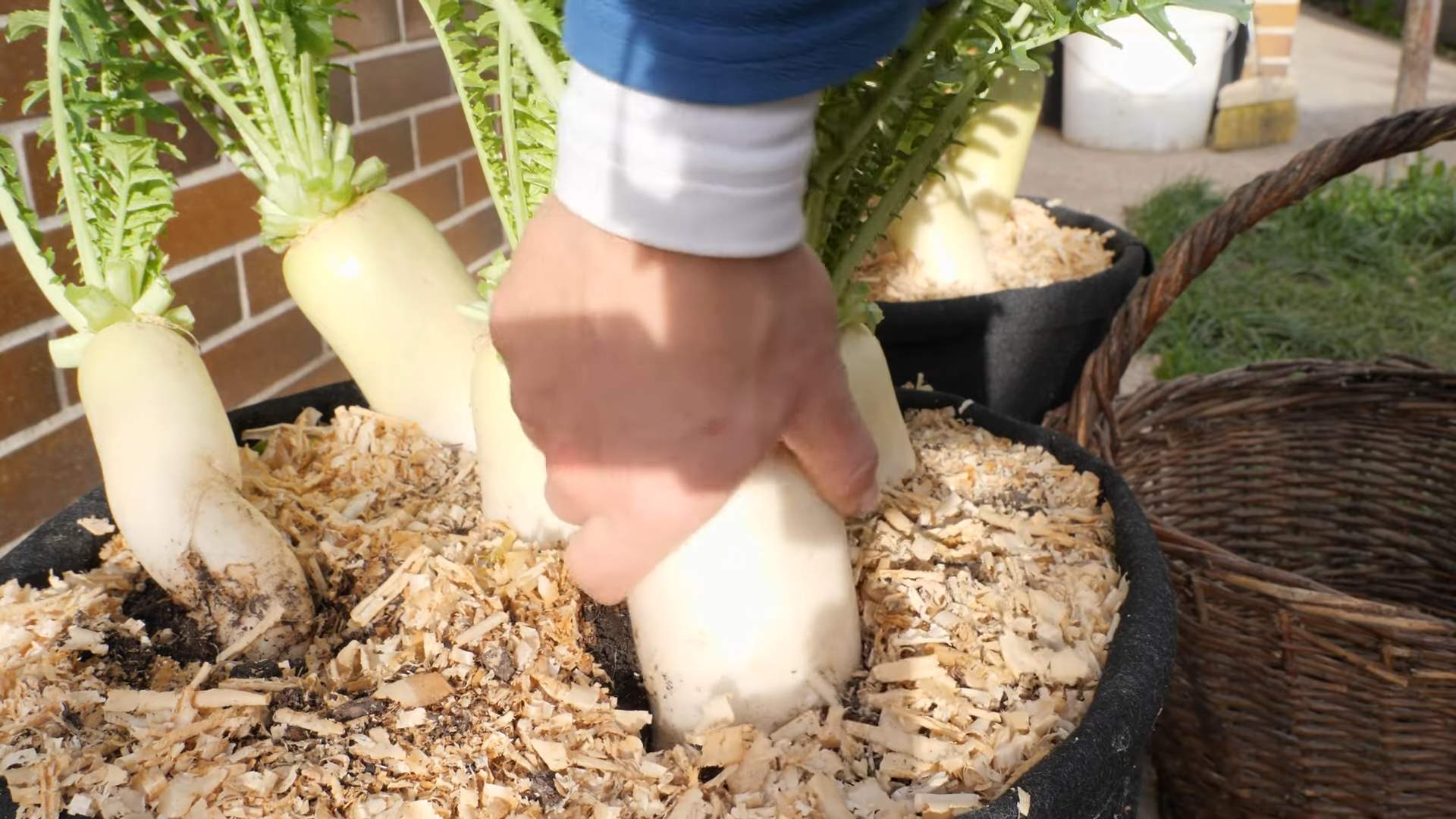
Growing Radishes: A Beginner’s Guide to a Speedy Harvest
Hey there, fellow garden enthusiasts! I’m so excited to share my experience with growing radishes. They’re one of the easiest and fastest vegetables to cultivate, perfect for beginner gardeners like myself (when I started!) and a great way to get a quick win in your garden. Plus, that peppery crunch is just irresistible! Let’s dive into how you can grow your own delicious radishes.
Choosing the Right Radish Variety
First things first, let’s talk about radish varieties. There are tons to choose from, each with its own unique flavor, size, and color. Here are a few of my favorites:
* Cherry Belle: These are classic, round, bright red radishes with a mild flavor. They’re super quick to mature, making them a great choice for impatient gardeners (like me!).
* French Breakfast: These are elongated, red radishes with a white tip and a slightly milder, sweeter flavor than Cherry Belle. They’re delicious sliced on buttered bread with a sprinkle of sea salt.
* Sparkler: Similar to Cherry Belle, but with a white tip. They offer a crisp texture and a slightly peppery bite.
* Black Spanish: For those who like a bit of a kick, these radishes are black on the outside and white on the inside, with a strong, pungent flavor. They take a bit longer to mature.
* Watermelon Radish: These are stunning! They have a pale green exterior and a vibrant pink interior, resembling a watermelon. They have a mild, slightly sweet flavor.
My Recommendation: If you’re just starting out, I highly recommend Cherry Belle or French Breakfast. They’re easy to grow and have a great flavor.
Preparing Your Radish Bed
Radishes are pretty adaptable, but they do best in well-drained soil that’s rich in organic matter. Here’s how I prepare my radish bed:
* Sunlight: Radishes need at least 6 hours of sunlight per day. Choose a sunny spot in your garden.
* Soil: Radishes prefer loose, fertile soil. If your soil is heavy clay, amend it with compost or well-rotted manure to improve drainage.
* pH: Radishes prefer a soil pH between 6.0 and 7.0. You can test your soil pH with a soil testing kit.
* Weed Removal: Clear the area of any weeds and rocks. Radishes don’t like competition.
* Loosening the Soil: Use a garden fork or tiller to loosen the soil to a depth of at least 6 inches.
* Adding Compost: Incorporate a generous amount of compost or well-rotted manure into the soil. This will provide nutrients and improve drainage.
* Leveling the Surface: Rake the surface smooth to create a level planting bed.
Planting Radish Seeds
Radishes are cool-season crops, meaning they grow best in the spring and fall. I usually plant my first crop in early spring, as soon as the soil can be worked. You can also plant successive crops every 2 weeks for a continuous harvest.
1. Create Rows: Use a hoe or trowel to create shallow rows about 1/2 inch deep and 1 inch apart.
2. Sow Seeds: Sow the radish seeds thinly in the rows, spacing them about 1 inch apart.
3. Cover Seeds: Gently cover the seeds with soil and lightly pat down.
4. Water Thoroughly: Water the bed thoroughly with a gentle spray. Keep the soil consistently moist until the seeds germinate.
Important Tip: Don’t sow the seeds too thickly, or you’ll have to thin them later. Thinning can disturb the roots of the remaining plants.
Caring for Your Radishes
Radishes are relatively low-maintenance, but here are a few things you can do to ensure a successful harvest:
* Watering: Keep the soil consistently moist, especially during hot, dry weather. Radishes need plenty of water to develop properly.
* Weeding: Keep the radish bed free of weeds. Weeds compete with radishes for nutrients and water.
* Thinning: If you sowed the seeds too thickly, thin the seedlings to about 1 inch apart when they are about 1 inch tall.
* Fertilizing: Radishes don’t need a lot of fertilizer. However, you can side-dress them with a balanced fertilizer a few weeks after planting.
* Pest Control: Radishes are generally pest-resistant, but they can be susceptible to flea beetles and root maggots. Cover your plants with row covers to protect them from pests.
Harvesting Your Radishes
This is the best part! Radishes are ready to harvest in as little as 3-4 weeks, depending on the variety.
1. Check for Size: Check the size of the radishes by gently brushing away the soil around the top of the root. They should be about 1 inch in diameter.
2. Pull Gently: Gently pull the radishes from the soil. If the soil is dry, water it before harvesting to make it easier to pull the radishes.
3. Wash and Store: Wash the radishes thoroughly and remove the tops. Store them in a plastic bag in the refrigerator for up to a week.
Harvesting Tip: Don’t let the radishes get too big, or they will become woody and bitter. Harvest them when they are the right size for their variety.
Troubleshooting Common Radish Problems
Even with the best care, you might encounter a few problems when growing radishes. Here are some common issues and how to deal with them:
* Radishes are too small: This can be caused by overcrowding, lack of water, or poor soil. Thin the seedlings, water regularly, and amend the soil with compost.
* Radishes are woody and bitter: This is usually caused by letting the radishes get too big before harvesting. Harvest them when they are the right size for their variety.
* Radishes are split: This can be caused by inconsistent watering. Water regularly and deeply, especially during hot, dry weather.
* Radishes are infested with pests: Cover your plants with row covers to protect them from pests. You can also use insecticidal soap or neem oil to control pests.
Radish Recipes and Uses
Radishes are incredibly versatile and can be used in a variety of dishes. Here are a few of my favorite ways to enjoy them:
* Raw: Slice them thinly and add them to salads, sandwiches, or tacos.
* Roasted: Roast them with other root vegetables for a delicious side dish.
* Pickled: Pickle them for a tangy and crunchy snack.
* Sautéed: Sauté them with butter and herbs for a simple and flavorful side dish.
* Radish Greens: Don’t throw away the radish greens! They’re edible and nutritious. Sauté them with garlic and olive oil, or add them to soups and salads.
My Favorite Recipe: Radish and Butter Sandwiches
This is a classic French snack that’s simple, elegant, and delicious.
1. Spread butter on a slice of baguette or crusty bread.
2. Top with thinly sliced radishes.
3. Sprinkle with sea salt and freshly ground black pepper.
4. Enjoy!
Extending Your Radish Season
To enjoy radishes for as long as possible, try these tips:
* Succession Planting: Plant a new crop of radishes every 2 weeks.
* Choose Different Varieties: Select varieties that mature at different times.
* Use Row Covers: Row covers can protect your plants from frost and extend the growing season.
* Plant in Containers: Radishes grow well in containers, which can be moved indoors during cold weather.
Radish Seed Saving
If you want to save seeds from your radishes, here’s what you need to do:
1. Let a Few Plants Bolt: Allow a few radish plants to bolt (flower and go to seed).
2. Harvest the Seed Pods: Once the seed pods are dry and brown, harvest them.
3. Dry the Seed Pods: Spread the seed pods out on a tray and let them dry completely.
4. Thresh the Seeds: Thresh the seeds by rubbing the seed pods between your hands.
5. Clean the Seeds: Clean the seeds by winnowing them to remove any chaff.
6. Store the Seeds: Store the seeds in an airtight container in a cool, dry place.
Important Note: Radishes are cross-pollinated, so if you’re growing multiple varieties, the seeds may not be true to type.
Final Thoughts
Growing radishes is a rewarding experience. They’re
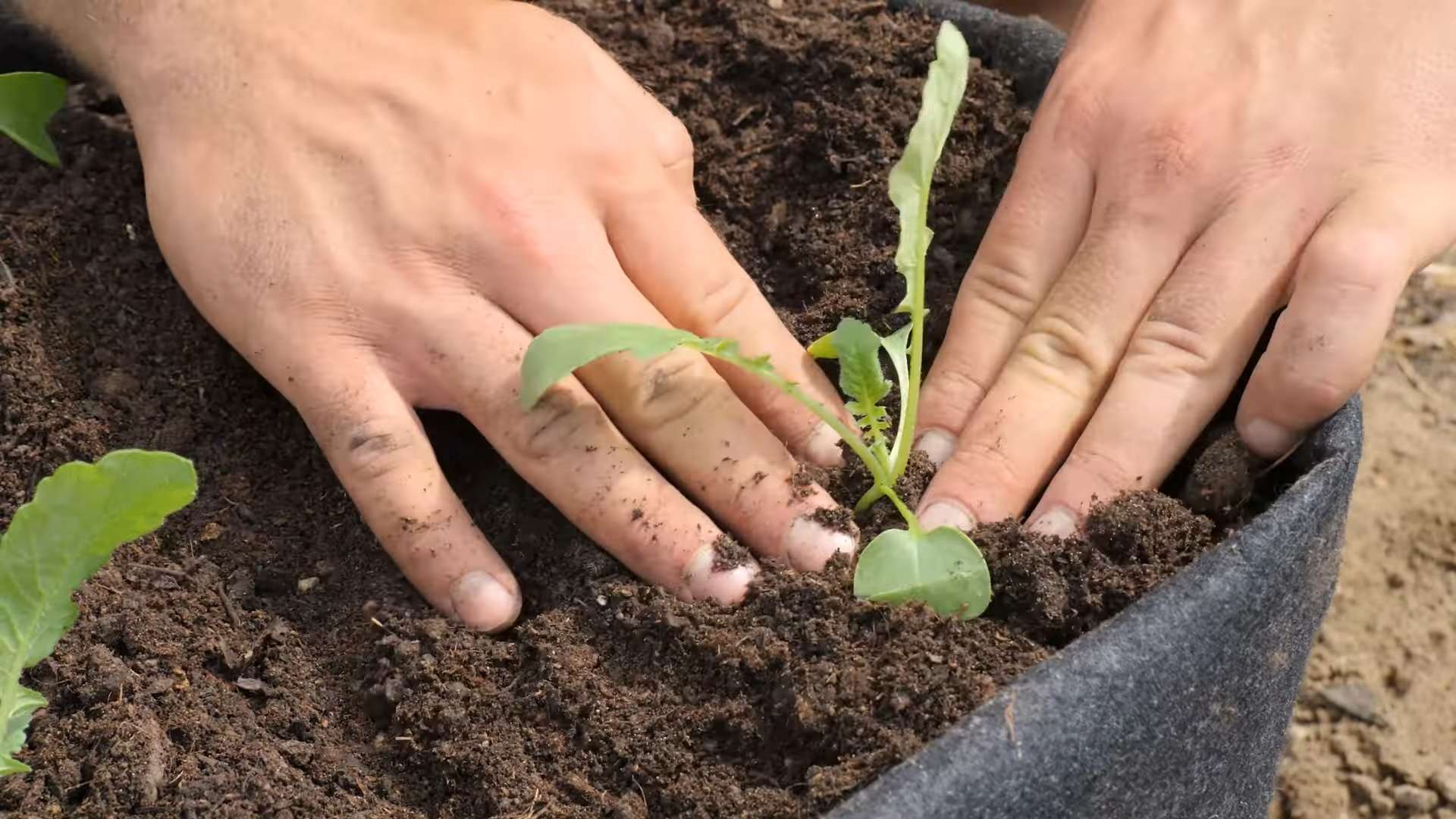
Conclusion
So, there you have it! Growing radishes in your kitchen garden is not only achievable but also incredibly rewarding. We’ve walked you through the simple steps, from seed to harvest, and hopefully demystified any concerns you might have had. Why is this DIY trick a must-try? Because it puts fresh, peppery radishes right at your fingertips, allowing you to enjoy their crispness and flavor whenever you desire. Forget those bland, store-bought radishes that have lost their zing. With your own kitchen garden, you control the quality and freshness, ensuring a superior taste experience.
Beyond the basic method, there’s plenty of room for experimentation. Consider planting different varieties of radishes. French Breakfast radishes offer a milder flavor, while Black Spanish radishes pack a more intense punch. You can also try succession planting, sowing seeds every couple of weeks to ensure a continuous harvest throughout the growing season. Another variation is to interplant radishes with slower-growing vegetables like carrots or lettuce. Radishes mature quickly and help break up the soil, creating a more favorable environment for their companions.
Don’t be afraid to get creative with your radish harvest! Thinly slice them into salads for a peppery kick, roast them with olive oil and herbs for a surprisingly sweet and savory side dish, or even pickle them for a tangy condiment. The possibilities are endless!
We wholeheartedly encourage you to give this DIY trick a try. It’s a fantastic way to connect with nature, learn about the growing process, and enjoy the fruits (or rather, roots!) of your labor. Growing radishes is a quick win for any gardener, beginner or experienced. It’s a satisfying project that yields delicious results in a matter of weeks.
Once you’ve embarked on your radish-growing adventure, we’d love to hear about your experience! Share your tips, tricks, and triumphs in the comments below. Let us know what varieties you tried, what challenges you faced, and what delicious dishes you created with your homegrown radishes. Your feedback will not only inspire others but also help us refine and improve this guide for future gardeners. So, grab your seeds, get your hands dirty, and get ready to enjoy the delightful taste of homegrown radishes! Happy gardening!
Frequently Asked Questions (FAQ)
What is the best time of year to plant radishes?
Radishes are cool-season crops, meaning they thrive in cooler temperatures. The best time to plant them is in early spring or late summer/early fall. In spring, plant as soon as the soil can be worked, typically 4-6 weeks before the last expected frost. For a fall harvest, plant 4-6 weeks before the first expected frost. Avoid planting during the heat of summer, as high temperatures can cause radishes to become tough and bitter.
How much sunlight do radishes need?
Radishes need at least 6 hours of sunlight per day to grow properly. Choose a location in your kitchen garden that receives ample sunlight. If you’re growing them indoors, consider using grow lights to supplement natural sunlight.
What kind of soil is best for growing radishes?
Radishes prefer loose, well-drained soil that is rich in organic matter. Amend heavy clay soil with compost or other organic materials to improve drainage and aeration. A slightly acidic soil pH of 6.0 to 7.0 is ideal.
How often should I water my radishes?
Radishes need consistent moisture to grow quickly and develop crisp, tender roots. Water regularly, especially during dry periods. Aim to keep the soil consistently moist but not waterlogged. Overwatering can lead to root rot.
How long does it take for radishes to mature?
One of the great things about radishes is their quick maturity. Most varieties are ready to harvest in just 3-4 weeks after planting. Check the seed packet for specific maturity times for the variety you are growing.
How do I know when my radishes are ready to harvest?
Radishes are ready to harvest when the roots are about 1 inch in diameter. Gently loosen the soil around the radish and pull it out of the ground. If the roots are too small, they may not be fully developed. If they are too large, they may become tough and bitter.
Why are my radishes cracking?
Cracking can be caused by inconsistent watering. If the soil dries out and then is suddenly saturated, the radishes can grow too quickly and crack. Maintain consistent moisture levels to prevent cracking.
Why are my radishes all tops and no roots?
This can be caused by several factors, including overcrowding, poor soil, and insufficient sunlight. Thin your radish seedlings to provide adequate spacing. Ensure the soil is rich in organic matter and that the plants are receiving at least 6 hours of sunlight per day.
Can I eat the radish greens?
Yes, radish greens are edible and nutritious! They have a peppery flavor similar to the roots. Use them in salads, soups, or stir-fries.
How do I store radishes after harvesting?
Remove the greens from the radishes and store them separately in the refrigerator. Place the radishes in a plastic bag or container with a damp paper towel to keep them crisp. They will typically last for about a week in the refrigerator.
What are some common pests and diseases that affect radishes?
Common pests that affect radishes include flea beetles, root maggots, and aphids. Diseases include damping-off and root rot. Use organic pest control methods, such as insecticidal soap or diatomaceous earth, to control pests. Ensure good drainage to prevent root rot.
Can I grow radishes in containers?
Yes, radishes are well-suited for container gardening. Choose a container that is at least 6 inches deep and has drainage holes. Use a good-quality potting mix and follow the same planting and care instructions as for growing radishes in the ground.
Are there different varieties of radishes?
Yes, there are many different varieties of radishes, each with its own unique flavor, color, and shape. Some popular varieties include Cherry Belle, French Breakfast, and Daikon. Experiment with different varieties to find your favorites.
How do I prevent my radishes from becoming too spicy?
Spiciness in radishes is often related to stress, such as inconsistent watering or high temperatures. Maintain consistent moisture levels and avoid planting during the hottest part of the year to reduce spiciness. Harvesting radishes promptly when they are mature can also help.
Can I save radish seeds for next year?
Saving radish seeds can be a bit tricky, as radishes are biennials, meaning they typically flower and produce seeds in their second year. To save seeds, you’ll need to overwinter the plants in a mild climate or dig them up and store them in a cool, dark place over the winter. In the spring, replant them and allow them to flower and produce seeds.

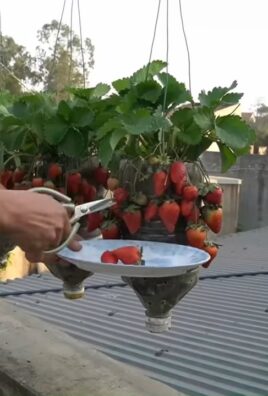
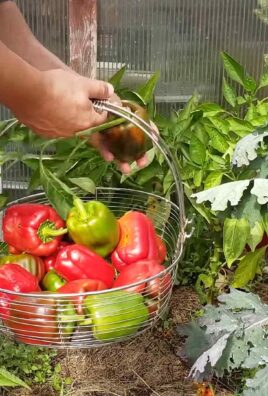
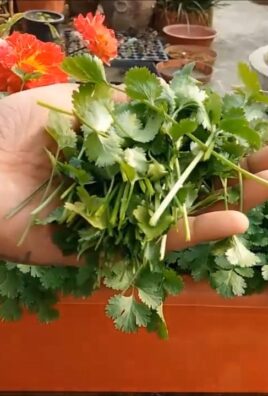
Leave a Comment